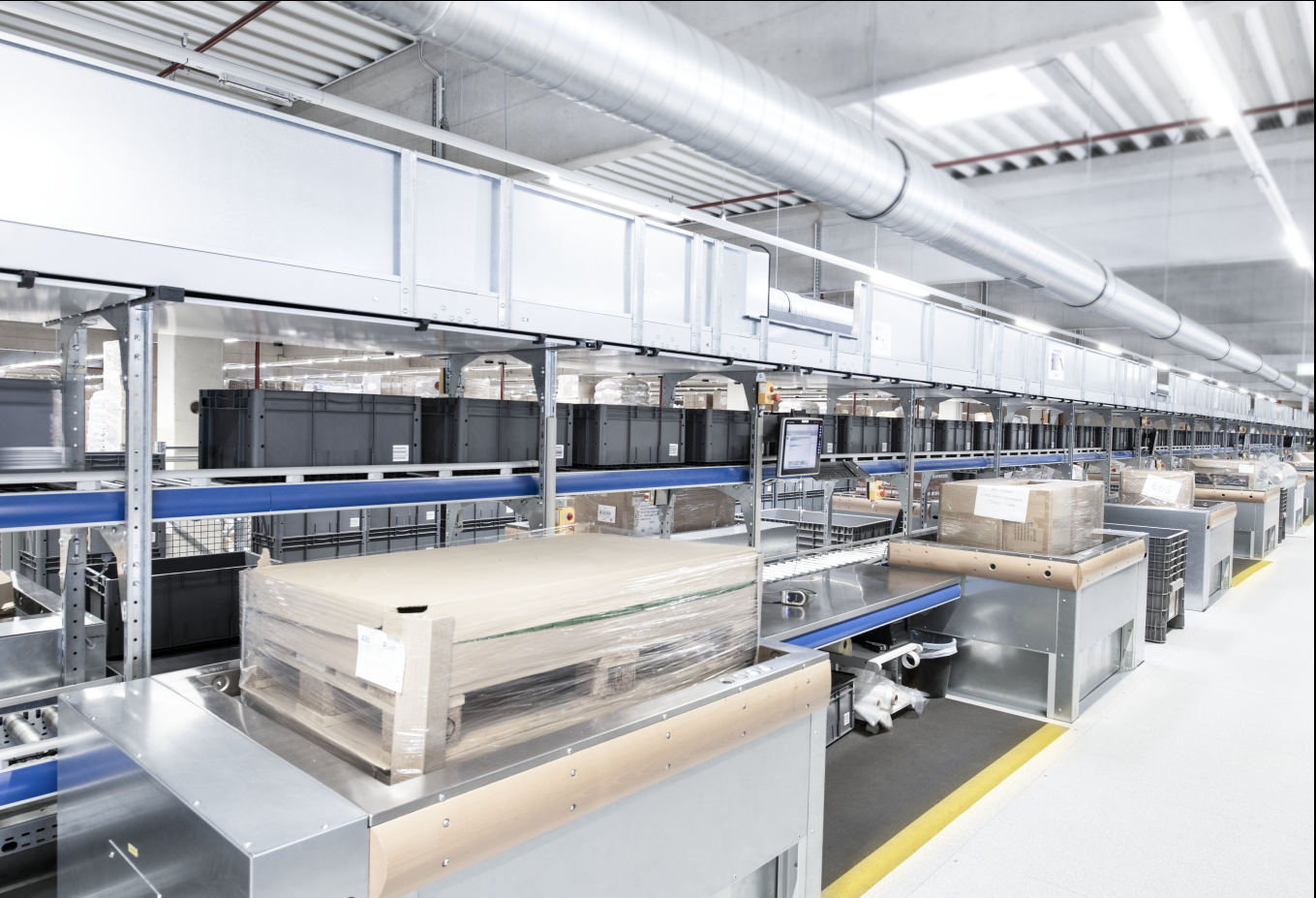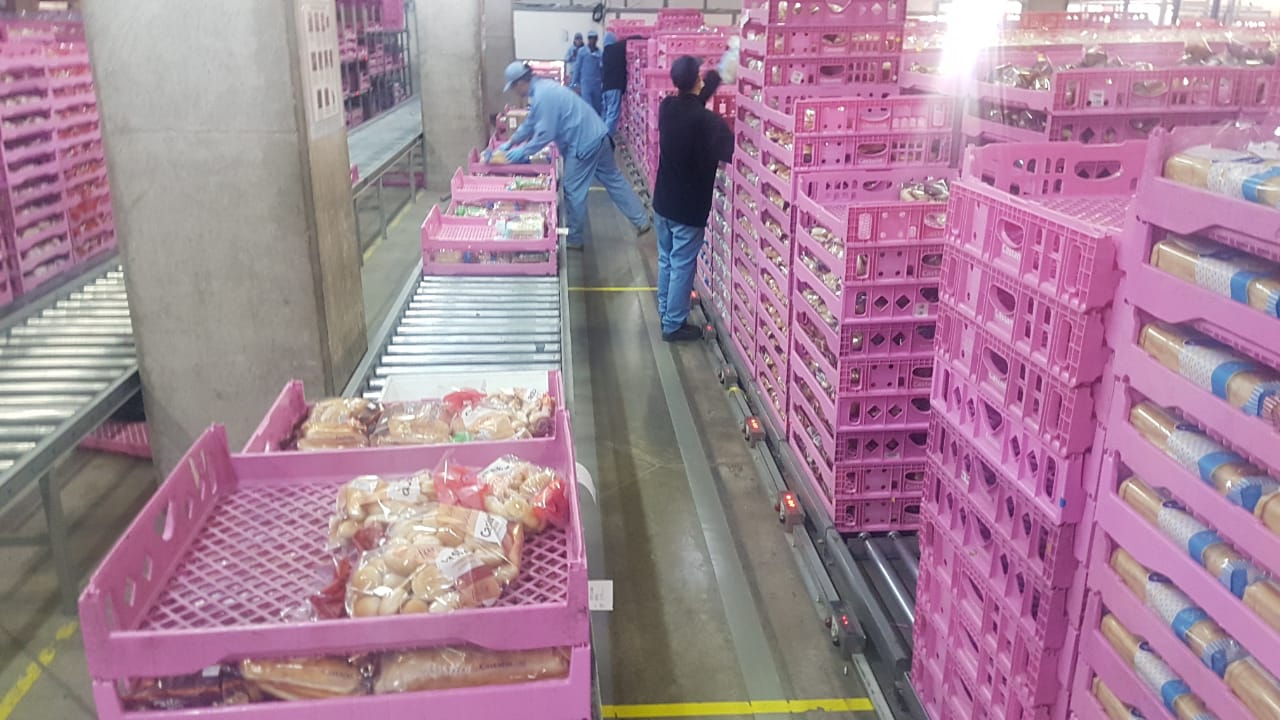Pet supplier Fressnapf opted for a sustainable system concept and SSI Schaefer’s intralogistics competence when extending its European distribution centre. Thanks to the holistic automation solution, Fressnapf was able to more than double its capacities, dynamics and productivity in order processing.
When it comes to your pet’s well-being, Fressnapf is your first choice. The Fressnapf group headquartered in Krefeld, Germany, is Europe’s number one for pet supplies. About 13,000 items ranging from pet food to accessories, care products and toys to cat litter and birdhouses are on sale. The products are sold throughout Europe in 1,500 plus stationary markets, more than 900 in Germany only, and the online shop established in 2009. In total, the group of companies’ employees more than 12,000 people. 800 of them are responsible for the professional processing of logistics throughout Europe and the supply chain. In addition to an import warehouse in Duisburg Logport, two regional warehouses in Southern Germany and a warehouse exclusively dedicated to e-commerce in Eastern Germany, the European distribution center (EDC) at the headquarters in Krefeld, which was established in 2000 and is continuously extended, is in focus.
“Supplying downstream storage locations, picking according to layout for store delivery and the growing number of products have continuously increased the number of tasks in recent years,” explains Christian Buschmann, Head of Inbound Logistics & Technology at Fressnapf. “For now, we have stored about 10,000 different products in our EDC. Against this background, we started our latest expansion and automation project for the logistics center in 2013 to increase our capacities and efficiency in order processing.”
Fressnapf opted for the intralogistics experts, SSI Schaefer, as general contractor for the implementation of a material flow and system concept as well as equipping a 13,000 m² system complex with a 10-aisle pallet narrow-aisle warehouse, a 3-aisle miniload for replenishment supply and a 4-aisle picking miniload, pallet and bin conveying system, 38 workstations, 12 of which in the preparation area and 26 in the picking area as well as 60,000 bins.
“The solution concept with the intelligently linked systems for merging and buffering the multi-step order picking perfectly implemented the requirements considering structural data, growth targets, process efficiency and extension options and furthermore ensures highest availability,” Mr. Buschmann explains, highlighting the choice of this supplier based on ideas competition and tender. “The result did not disappoint us: 100,000 new packages per day considerably increased our productivity after commissioning the new warehouse complex and, at the same time, more than doubled our turnout.”
In the middle of 2017, SSI Schaefer handed over a system for mainly automated logistics processes with store-friendly picking and provision. The focus was on increasing capacity and efficiency, especially in the small parts segment. “Small parts are primarily stored in Krefeld and account for about 50% of the products on stock,” tells Mr. Buschmann and refers to the Fressnapf product structure. “The non-food segment includes accessories such as leashes, toys and nestable feeding dishes. Furthermore, the food sector of our product range comprises, among others, snacks and special food in different varieties and package sizes.” Correspondingly, SSI Schaefer adapted the system concept to optimize storage and efficient picking processes for bagged goods and small parts. “We automated processes wherever economically advantageous to relieve our employees,” says Buschmann. “SSI Schaefer’s concept of different picking areas for different order requirements is ideal for varying turnover rates of the diversified product range in our EDC.”
SSI Schaefer directly connected the conveying system to the existing warehouse area creating a multi-user-friendly storage complex. “In parallel, the complex processes are integrated into a holistic material flow,” explains Matthias Häußler, SSI Schaefer project manager. For instance, the goods-in area was covered by a double-story steel platform construction. On level zero, the goods delivered on pallets are processed, recorded and transported to storage according to the specifications of the warehouse management system (WMS).
After registration, forklift trucks transport the delivered goods first to a 10-aisle narrow aisle warehouse with 5,840 storage locations for temporary storage. It serves as replenishment supply for the miniload and provision of entire pallets. For direct supply with promotion items, a rack system with about 300 pallet locations was installed.
For automated processes of pallet supply to the preparation workstations, forklift trucks hand the pallets over to the pallet conveying system on the bottom level of the goods-in platform. The pallets are transported on a platform above the goods-in area to two transfer carriages. These carriages supply two transfer conveyors, which hand over the pallets to 24 lifts. The lifts transport pallets to and from the 12 depalletization locations on the upper level of the goods-in platform; each workstation is supplied by two lifts. At the depalletization workstations, the goods are separated. For this purpose, the stations are equipped with a three-story conveying system: On the center level, the empty bins are supplied while target bins are taken away on the bottom level and used cartons are removed on a belt conveyor on the top level. The conveying system transports the target bins containing the separated items or packages either to the miniload or directly to one of the 8 Schäfer Carousel Systems (SCS) for picking.
The miniload consists of two storage blocks according to functional areas: Three aisles with almost 35,000 bin storage locations serve as buffer stock. From there, the four aisles of the picking miniload with 22,300 bin storage locations for fast movers are supplied. A total of 7 storage and retrieval machines, type Schäfer Miniload Crane (SMC) are responsible for storage and retrieval. On the bottom level of the picking miniload, picking sations have been installed including dynamic channels for replenishment from behind. The stations are separated into individual conveyor branches equipped with a Pick by Light (PBL) system.
“This design facilitates picking with short walking distances,” explains the project manager, Mr. Häußler. An automatic carton erector provides cartons, which receive a routing label on both sides upon order start. The labeled target cartons are transported on a continuous vertical conveyor to the circulating conveying system. Integrated scan technology together with the WMS ensure that cartons stop at stations required for order picking. There, the pick faces of the PBL system show the pickers the corresponding compartment as well as the picking quantity. After confirming picking, the cartons continue to the next station on the conveying section. Once picking has been completed, the shipping cartons are compacted and closed by an automatic tape carton sealer and after a weight check, a shipping label is applied. The conveying system transports the cartons directly to the gravity roller conveyors in the shipping area or to one of the two SCS especially equipped for carton handling for temporary storage. Shipping cartons from different picking areas are merged there and stored temporarily.
In addition to the picking miniload, Fressnapf has more than 10,000 more locations for medium and slow movers available in 8 further picking SCS. The SCS are located on two levels and equipped with a Pick to Tote (PTT) workstation each for dynamic picking processes. The pickers receive the source bins in sequence and are able to pick up to seven orders in parallel directly into the shipping cartons. Once picking has been completed, the shipping cartons are again compacted and closed automatically and a shipping label is applied. Optionally, the system can also be used for e-commerce as it enables Fressnapf to divert shipping cartons for e-commerce customers directly after completion at one of the 6 intended CEP workstations to the goods-out area using a spiral conveyor and a specially designed gravity roller conveyor. Order positions for store delivery are conveyed to a downstream consolidation buffer for order consolidation. It contains more than 8,700 storage locations for tour- and store-friendly palletization. In parallel, order cartons for manual palletization may be diverted directly to the 50 shipping lanes in the goods-out area. There, order consolidation with palletized bulky items from other storage areas takes place. “SSI Schaefer ensures the required availability and high clock rate for picking,” summarizes Christian Buschmann. “As a consequence, we could considerably increase efficiency, productivity and customer services. Features, such as volume-optimized shipping effectively improved our cost structure. We are especially happy that the working environment for our employees is extremely more comfortable thanks to the ergonomic workstations.”





